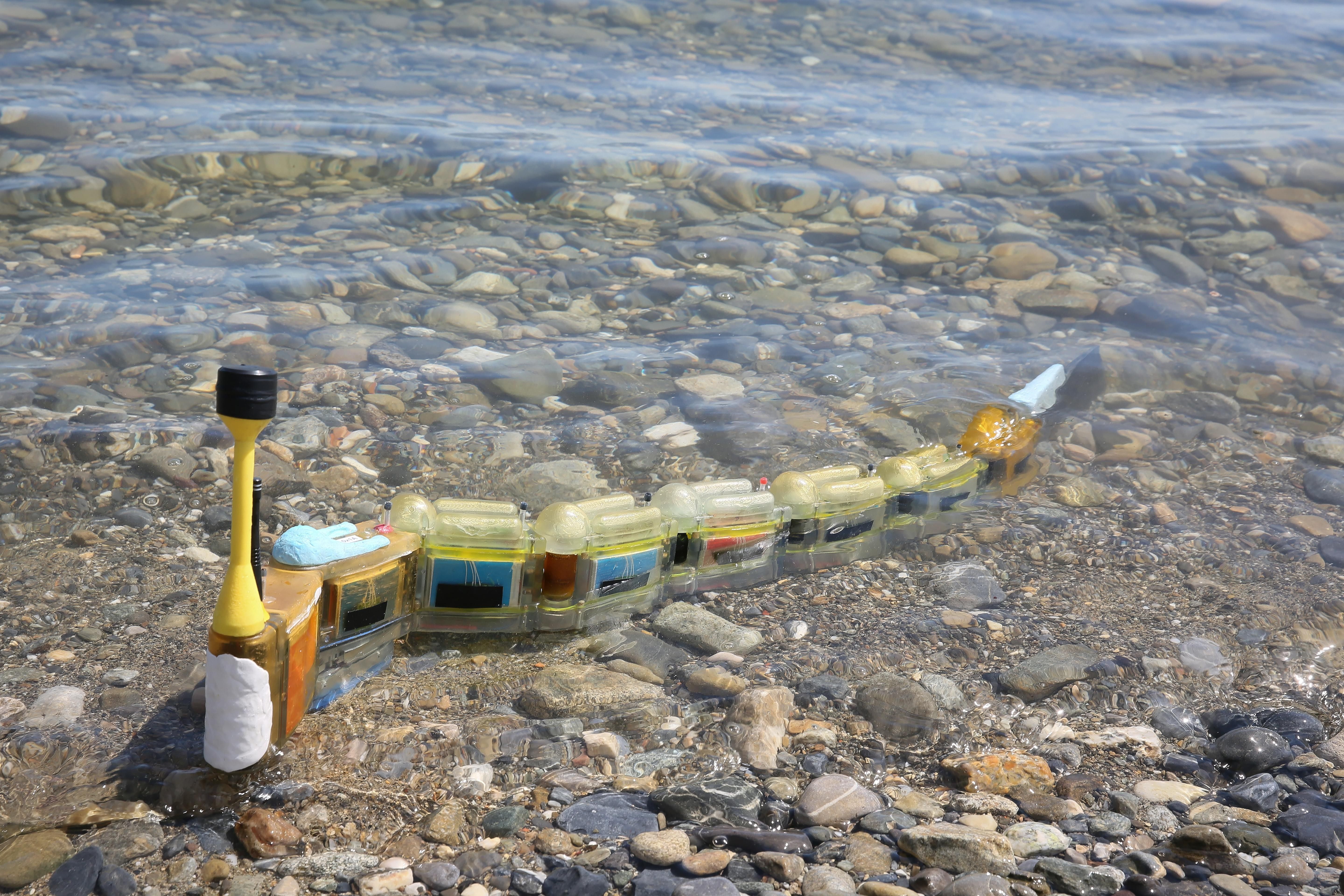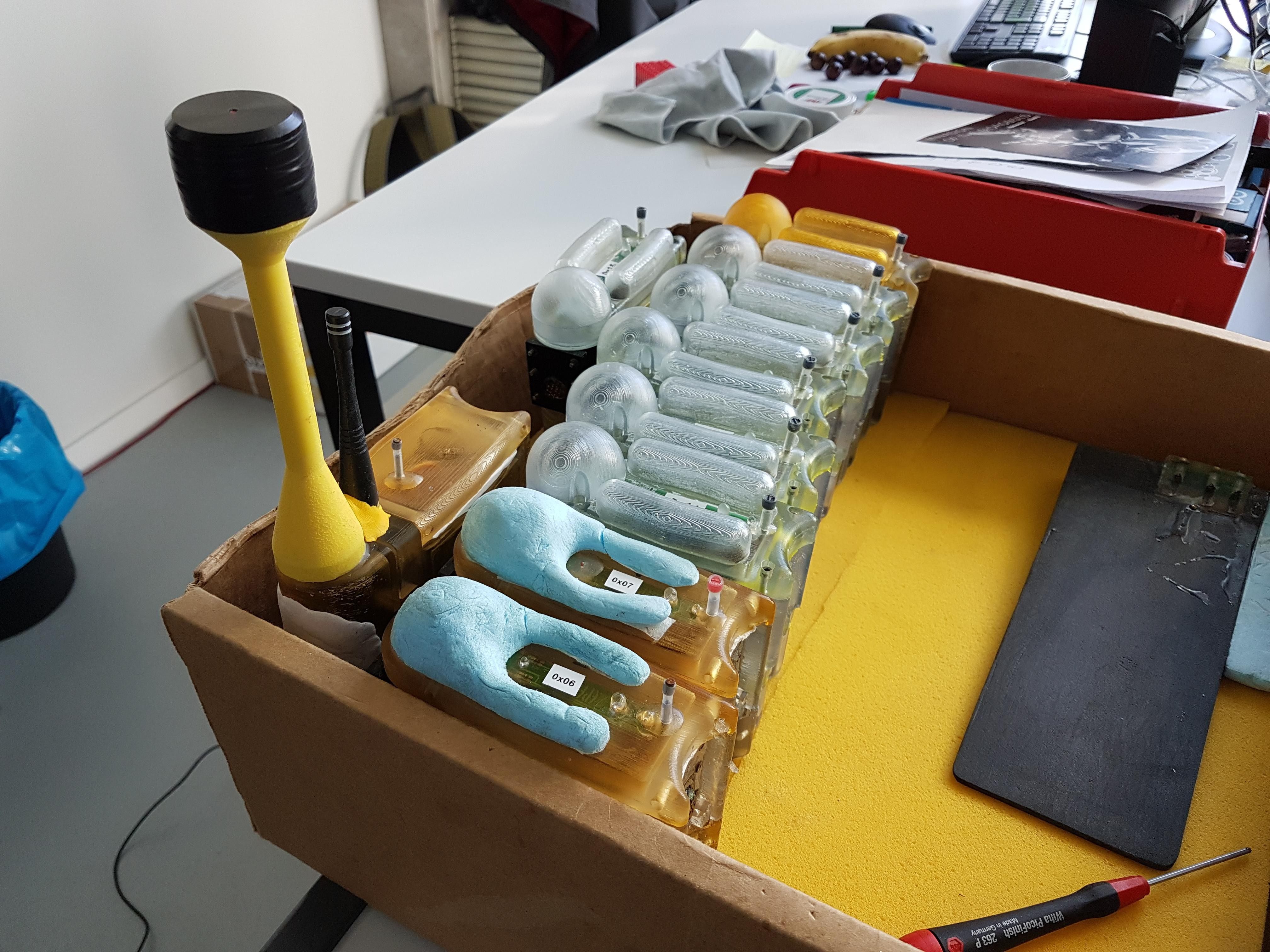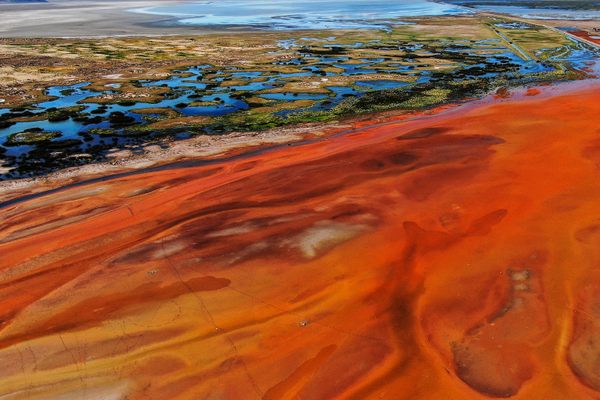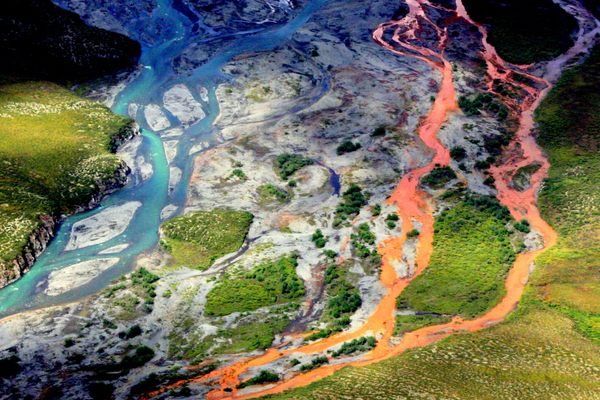An Eel-Inspired Robot Is Scientists’ Newest Pollution-Sniffer
It swims, it slithers, and it samples.

If you’re standing on the shores of Lake Geneva and spot something strange swimming through the water, it’s probably not Nessie’s cousin. If it’s swishing back and forth and has a funny yellow antenna, it’s probably Envirobot. Modeled after lamprey eels, Envirobot is a long, sensor-laden robot capable of swimming along the surface to collect samples and data for environmental scientists.
Envirobot’s creators, a team of researchers from École Polytechnique Fédérale de Lausanne in Switzerland, took advantage of advances in 3D printing to develop a robot that can collect important environmental data and deliver it to scientists in real time.
The robot was envisioned and designed to be modular, so scientists can swap out the pieces they need. “Those modules, by default, they don’t have any sensors,” explains Alessandro Crespi, a member of the Envirobot team. That’s by design. The empty modules allow researchers and other project partners to develop their own sensors and technology to load in. During recent tests on Lake Geneva, Envirobot just took water samples, and measured the temperature and electrical conductivity of the water, but one partner is developing a pH sensor and another a biosensor that uses a tiny crustacean that is sensitive to changes in the water.

Those crustaceans belong to the genus Daphnia, and they are microscopic pollution trackers—exceptionally and indiscriminately sensitive to contaminants—used in a lot of chemical and environmental research. “This sensor based on the Daphnia is actually able to measure pollutants without knowing what it’s looking for,” says Crespi. That’s important when scientists don’t know whether a body of water is polluted.” The water may look fine, but Daphnia can tell whether there’s a problem. And putting tiny tanks of Daphnia on board the eel-shaped robot takes the test out of the lab and into the field. “We can actually really achieve some kind of real-time detection.”
Other biosensors are in the works, including one that uses genetically engineered bacteria that will respond to specific chemicals.

While Envirobot’s modular parts and capacity for novel sensors make it a useful tool for investigating pollution, there are still details that need to be worked out. Waterproofing, for example, is an ongoing challenge. “Most of the time, when we actually have some problem happening in the robot, it comes from a leakage,” says Crespi. Controlling Envirobot is also difficult. Currently, technology limits just how far the robot can swim on its own before the navigation and locomotion systems lose calibration. Once Envirobot swims too far, says Crespi, “if something goes wrong, there is no way to tell it to come back.”
But Crespi is optimistic these challenges can be overcome and the robot can eventually operate fully on its own. “If we want to send the robot in the middle of the lake for a mission, of course we don’t want to go after it with a boat. That would eliminate all the purpose of the robot,” he says. “We can definitely have autonomous navigation.”

Eventually, this project’s descendants will operate autonomously even underwater. “We want to be able to go under water too, not just on the surface, but this comes with a lot of other issues that we have to figure out how to deal with,” says Crespi. “For example, how do we position the robot in the underwater when we have no GPS signal?”
For now, it can sense plenty on the water’s surface, but that step underwater would allow scientists to construct a 3D map of pollution in a water body, something that’s only possible today through lots of labor-intensive sampling. Envirobot could then take the next step, to become a kind of pollution bloodhound. “We want to have the robot to be able to actually look for a very specific pollution source by following the concentration gradient.” By tracking the pollution levels, Envirobot will be able to pinpoint, say, fertilizer runoff from a farm, or illegal waste dumping by a chemical company.
This may take a while, but Envirobot’s off to a promising start.


















Follow us on Twitter to get the latest on the world's hidden wonders.
Like us on Facebook to get the latest on the world's hidden wonders.
Follow us on Twitter Like us on Facebook